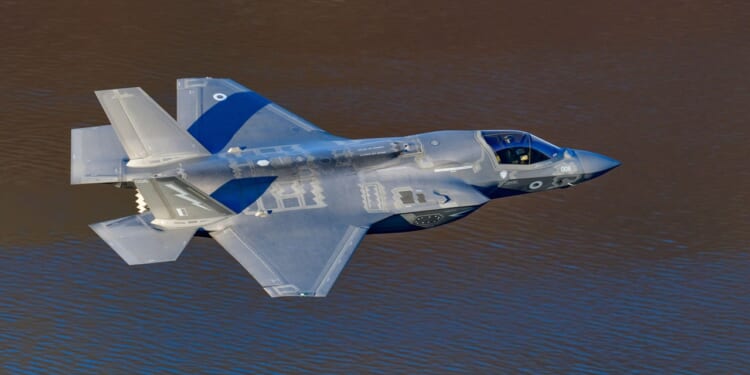The UK Parliament’s Public Accounts Committee found that a “pattern of short-term decision-making” had delayed investment in the F-35 fighter jet early on, increasing its later costs.
The British Ministry of Defence has been unable to commit fully to the Lockheed Martin F-35 Lightning II fighter jet. The NATO member and close US ally had been the only Tier 1 international partner of the program and initially planned to acquire 138 multirole combat aircraft, only to cut the order to just 48.
After the Labour government swept into power in July 2024, any further commitment to the Lightning, the UK’s designation for the fifth-generation stealth Joint Strike Fighter, appeared in question. There was speculation that Prime Minister Sir Keir Starmer would scale back defense spending—or at least shift the focus towards the Global Combat Air Programme (GCAP) over the F-35.
However, in June, the Labour-led MoD announced plans to acquire an additional 27 F-35s, including 15 F-35Bs and 12 F-35As. Previously, all of the UK’s Lightning fighters had been the B variant. The aircraft are currently operated by 617 Squadron of the Royal Air Force (RAF) and 809 Naval Air Squadron of the Royal Navy.
New Report Castigates “Short-Termism” in UK Military Planning
A new report published last month by the British Parliament’s Public Accounts Committee (PAC) warned that the Lightning II had its “wings clipped by complacent MoD’s short-termism,” and that the F-35 was “the best jet the UK has ever had.”
The PAC found that a “pattern of short-term decision-making” impacted the F-35’s capability, but also its availability and most notably its “value.” By delaying investment in the aircraft early on, costs increased due to inflation. This resulted in short-term financial savings, but reduced the number of Lightning fighters in service, despite the fact that it was clear the aircraft would cost more in the long term.
“Costs here have now increased from £56m to a forecast £154m,” the PAC explained.
The committee, which serves as a watchdog for government spending, suggested it had taken a penny-wise, pound-foolish approach to aircraft acquisition.
“Making short-term cost decisions is famously inadvisable if you’re a homeowner with a leaky roof, let alone if one is running a complex fighter jet programme—and yet such decisions have been rife in the management of the F-35,” said Sir Geoffrey Clifton-Brown MP, chair of the Public Accounts Committee.
“During our inquiry, the MoD told us that they viewed these kinds of decisions costing the taxpayer many millions more in the long-term than the money saved in the short term, as a ‘conventional consequence’ of budget management. This is exactly the sort of attitude that our Committee exists to challenge,” Clifton-Brown added.
The UK Is on Track to Buy More F-35s—but Issues Remain
The PAC acknowledged that the F-35 program still faces issues, including delays with Technology Refresh-3 (TR-3), which resulted in deliveries being halted for more than a year.
That has presented issues for the British military, as its Lightnings still can’t carry stand-off weapons to attack ground targets at safe distances. Those capabilities won’t be integrated into the fighter until the early 2030s.
Those issues are not limited to the UK, and are now being addressed by Lockheed Martin and the F-35 Joint Production Office (JPO).
There has also been discussion over the decision to split future acquisitions between the F-35A, the conventional takeoff and landing (CTOL) variant, and the F-35B, the short takeoff and vertical landing (STOVL) version that can operate from the Royal Navy’s two Queen Elizabeth-class conventionally-powered aircraft carriers. The F-35As will be used for training, but will also be part of NATO’s dual-capable aircraft nuclear mission.
“Only the F-35A variant can carry nuclear weapons,” the report explained. “The Department acknowledged that becoming certified for the NATO nuclear mission will add new requirements to training, personnel and possibly infrastructure.”
Clifton-Brown further acknowledged that the UK continues to face a shortfall in personnel for the military, which will impact the immediate success of the program. It may take years to recruit, train, and integrate the personnel into the program, but the MP stressed that if these issues can be resolved, the Lightning is the right tool for the job.
“The F-35 is the best fighter jet this nation has ever possessed,” suggested Clifton-Brown. “If it is to be wielded in the manner in which it deserves, the MoD must root out the short-termism, complacency and miscalculation in the programme identified in our report.”
About the Author: Peter Suciu
Peter Suciu has contributed over 3,200 published pieces to more than four dozen magazines and websites over a 30-year career in journalism. He regularly writes about military hardware, firearms history, cybersecurity, politics, and international affairs. Peter is also a contributing writer for Forbes and Clearance Jobs. He is based in Michigan. You can follow him on Twitter: @PeterSuciu. You can email the author: [email protected].
Image: Shutterstock / Wirestock Creators.


















